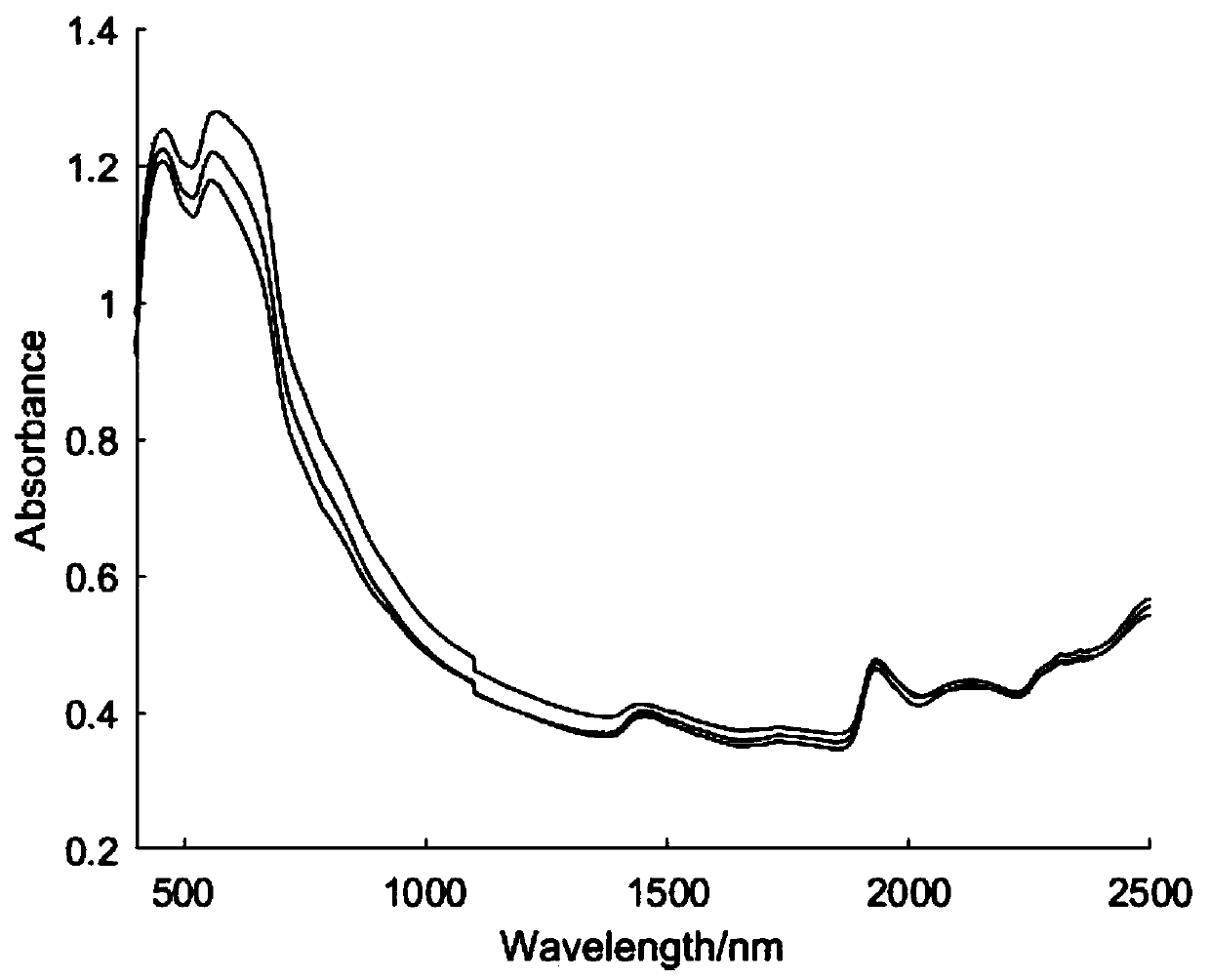Multivariable correction characteristic wavelength selection method based on minimum correlation coefficient
A technology of correlation coefficient and characteristic wavelength, which is applied in the field of near-infrared spectrum wavelength selection, can solve problems such as difficult to understand principles, variable collinearity, and complex operation, and achieve the effects of improving robustness and prediction accuracy, efficient dimensionality reduction, and cost reduction
- Summary
- Abstract
- Description
- Claims
- Application Information
AI Technical Summary
Problems solved by technology
Method used
Image
Examples
Embodiment 1
[0038] The near-infrared spectroscopy data of soil samples are public and come from the website Quality&Technology. The sample data contains two parts, the NIR spectrum and chemical properties of the sample. There are 108 samples in total. The wavelength range of the sample spectrum is 400-2500nm, the sampling interval is 2nm, and there are 1050 wavelength points in total. The near-infrared spectrum diagram is as follows figure 2 shown. The present invention uses soil organic matter content as a dependent variable to carry out wavelength selection and near-infrared spectrum data modeling prediction analysis to prove the effectiveness of the method.
[0039] Step 1: Divide 108 samples into 75% modeling set and 25% validation set, the modeling set contains 81 samples, and the validation set contains 27 samples. In order to correct the spectral baseline, eliminate the interference of other backgrounds, and improve the spectral resolution, the original spectral data is preproc...
Embodiment 2
[0057] A set of near-infrared spectral data of publicly available grains from the website EigenVector. The data set includes 80 grain samples measured by three different near-infrared spectrometers. The wavelength range of the sample spectrum is 1100-2498nm, and the sampling interval is 2nm, with a total of 700 wavelength points. Chemical properties include moisture, oil, protein and starch values. In this example, the near-infrared spectrum measured by the instrument mp6 is selected, and the starch content in the grain is used as the dependent variable to carry out wavelength selection, spectral data modeling, and predictive analysis to illustrate the effectiveness of this method.
[0058] Step 1: Divide 80 samples into 75% training set and 25% validation set, the modeling set contains 60 samples, and the validation set contains 20 samples. In order to correct the spectral baseline, eliminate the interference of other backgrounds, and improve the spectral resolution, the ori...
PUM
 Login to View More
Login to View More Abstract
Description
Claims
Application Information
 Login to View More
Login to View More - R&D
- Intellectual Property
- Life Sciences
- Materials
- Tech Scout
- Unparalleled Data Quality
- Higher Quality Content
- 60% Fewer Hallucinations
Browse by: Latest US Patents, China's latest patents, Technical Efficacy Thesaurus, Application Domain, Technology Topic, Popular Technical Reports.
© 2025 PatSnap. All rights reserved.Legal|Privacy policy|Modern Slavery Act Transparency Statement|Sitemap|About US| Contact US: help@patsnap.com



